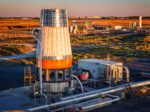Australia has announced a landmark AU$8 billion (approx. USD 5.2 billion) investment to establish a nuclear-powered submarine construction hub in Adelaide. This major infrastructure initiative underpins the trilateral AUKUS agreement and marks a pivotal step in reshaping the Indo-Pacific’s strategic maritime balance.
Strategic Context: AUKUS Pillar I and Australia’s Naval Ambitions
The investment is part of AUKUS Pillar I—an agreement between Australia, the United Kingdom, and the United States focused on delivering nuclear-powered attack submarines (SSNs) to the Royal Australian Navy (RAN). Under this framework, Australia will acquire at least eight SSNs based on a new UK-led design known as SSN-AUKUS. The vessels will be constructed domestically at Osborne Naval Shipyard in South Australia with significant industrial support from BAE Systems and Rolls-Royce.
This announcement represents one of Australia’s largest-ever defense infrastructure commitments and is intended to enable sovereign build capability for nuclear-powered submarines by the early 2040s. In parallel, Australia will begin operating three Virginia-class SSNs from the early 2030s—procured from the U.S.—as an interim capability while domestic production ramps up.
Osborne Naval Shipyard Expansion: Scope and Timeline
The AU$8 billion allocation will fund an expansive redevelopment of Osborne Naval Shipyard over the next decade. According to official statements from Australia’s Department of Defence and Defence Minister Richard Marles:
- Construction of new purpose-built facilities for handling nuclear propulsion modules
- Development of secure assembly halls for pressure hull integration
- Installation of advanced digital shipbuilding systems aligned with BAE’s “Shipyard of the Future” model used in Barrow-in-Furness (UK)
- Workforce expansion targeting over 4,000 skilled personnel by peak production
The first Australian-built SSN-AUKUS is expected to enter service in the early 2040s. To meet this timeline, construction on site infrastructure must commence by mid-2026. The program also includes provisions for long-term maintenance and sustainment facilities capable of supporting both Australian-flagged and visiting U.S./UK SSNs.
Industrial Base Development and Workforce Challenges
A key challenge facing this endeavor is workforce readiness. The scale of skilled labor required—nuclear engineers, welders certified for submarine pressure hulls, systems integrators—is unprecedented in Australia’s defense sector. To address this:
- A trilateral training pipeline has been launched involving placements at U.S. Navy shipyards (e.g., Electric Boat) and UK facilities (e.g., BAE Barrow)
- Australian universities are expanding nuclear engineering programs with government funding
- A National Skills Academy for Nuclear-Powered Submarines is being established near Osborne
This long-term industrial uplift mirrors historical precedents such as Canada’s Cold War-era submarine programs or South Korea’s indigenous KSS-III development—but with added complexity due to nuclear propulsion technologies.
Nuclear Stewardship Framework and Regulatory Oversight
Given that Australia does not currently operate any civil or military nuclear reactors, establishing robust regulatory frameworks is critical. In March 2023, Canberra announced formation of the Australian Nuclear-Powered Submarine Safety Regulator (ANPSSR), an independent body modeled after U.S. Naval Reactors oversight structures.
The ANPSSR will oversee all aspects of reactor safety during construction, operation, decommissioning, waste management—and interface with allied regulators such as UK’s Office for Nuclear Regulation (ONR). Additionally:
- A dedicated naval reactor school will be established within Defence Science & Technology Group (DSTG)
- Nuclear fuel handling protocols are being co-developed with U.S./UK partners under strict non-proliferation safeguards
Strategic Impact on Indo-Pacific Maritime Posture
The establishment of an indigenous SSN production capability positions Australia among a select group of nations capable of building nuclear-powered submarines—a list currently limited to six countries globally.
This development significantly enhances allied deterrence posture vis-à-vis China’s growing naval capabilities in the Indo-Pacific region. Key implications include:
- Sustained underwater presence across key chokepoints such as Lombok Strait or Philippine Sea
- Interoperability with U.S./Royal Navy platforms via shared combat systems architecture (likely AN/BYG-1)
- Basing flexibility through rotational deployments at HMAS Stirling under “Submarine Rotational Force-West” concept starting late-2020s
Program Risks and Political Considerations
The scale and ambition of this program are not without risks:
- Cost Overruns: Historical submarine programs often exceed initial budgets; e.g., UK Astute-class saw >50% cost increase over original estimates.
- Schedule Delays: Any slippage could create capability gaps post-Collins-class retirement (~2036).
- Sovereignty Concerns: Critics argue reliance on foreign technology may limit operational independence despite sovereign build claims.
Bipartisan political support remains strong but could shift depending on future economic conditions or changes in regional threat perceptions.
Conclusion: A Defining Milestone for Australian Defense Industry
This AU$8 billion investment signals more than just infrastructure—it marks Australia’s entry into a new echelon of military-industrial capability centered around complex naval platforms powered by strategic-level propulsion technology. While challenges remain formidable—from workforce readiness to regulatory maturity—the long-term payoff could redefine Australia’s role within allied force structures across the Indo-Pacific well into mid-century.









